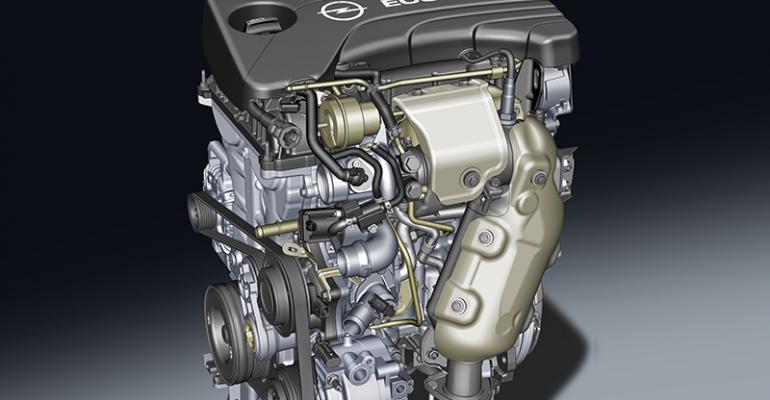General Motors today unveils a new global family of 3- and 4-cyl engines ranging in displacement between 1.0L and 1.5L and loaded with the latest powertrain technologies aimed at improving the power, efficiency and quietness of some of the automaker’s highest-volume vehicles.
“Transportation solutions vary around the world and GM is committed to developing engines matched to the needs of the regions where they’re sold,” says Steve Kiefer, vice president-Global Powertrain Engineering.
“The new engine family is designed to achieve segment-leading refinement and efficiency and will make its way into five GM brands and 27 models by the 2017 model year,” Kiefer says in a statement ahead of showing the engines to the media at the automaker’s Pontiac, MI, powertrain headquarters.
The engine family represents just part of multi-year powertrain investment by GM to meet tightening global fuel-economy regulations and improve customer satisfaction with its products.
According to WardsAuto data, the penetration of engines with four or fewer cylinders in U.S. light vehicles reached 50.1% in 2013, compared with 28.2% a decade ago.
GM first announced its new pint-sized engines in 2011 during Chevrolet’s 100th anniversary celebration in Detroit. Ford, BMW, and Honda are among automakers planning all-new or expanded small-engine portfolios for the U.S. in the coming months.
GM expects to build 2.5 million of the Ecotec-branded engines worldwide by 2017. They will come from its engine-assembly plants in Flint, MI, which received a $200 million investment to produce them; Shenyang, China; Szentgotthard, Hungary; Toluca, Mexico; and Changwon, South Korea.
The first models to gain one of the new engines will be the Opel Adam city car in Europe, using a 1.0L turbocharged 3-cyl. variant, and the ’15 Chevrolet Cruze C-car in China, with 1.4L turbocharged and 1.5L naturally aspirated 4-cyl. options.
The China-exclusive Cruze also will receive a new dual-clutch transmission when it bows later this year.
Altogether, the new Ecotec portfolio includes 11 engines with 3- and 4-cyl. variants ranging in displacement between 1.0L and 1.5L. Turbocharged and naturally aspirated power ratings range from 75 hp to 165 hp and torque between 70 lb.-ft. (95 Nm) and 184 lb.-ft. (250 Nm), GM says. The architecture accommodates hybrid propulsion systems and alternative fuels.
GM expects industry-leading power, efficiency and refinement.
The 1.0L 3-cyl. engine bound for the Opel Adam, the automaker says, makes as much power as the naturally aspirated 1.6L 4-cyl. it replaces. Overall efficiency improves 20%. Meanwhile, the new 1.4L turbo 4-cyl. engine will be upwards of 5% more efficient than the 1.4L turbo it replaces.
GM claims the engines are up to 5% quieter than those of its competition.
“Along with performance and efficiency targets, we’ve also aimed for segment-leading refinement with low noise and vibration, and we’ve hit the bulls-eye,” says Tom Sutter, global chief engineer-GM Powertrain.
The engine family takes a fresh design perspective, too, using a modular architecture where the blocks share bore spacing, bore diameter, liners and other dimensions to reduce complexity and increase the variety of vehicles in which they’ll be applied.
All of the engine blocks and heads are made from weight-reducing aluminum, and are outfitted with the latest powertrain technologies such as direct fuel injection, continuously variable valve timing and variable intake manifold airflow to improve breathing for better overall performance and fuel efficiency.
All of the engines use regular unleaded gasoline.





